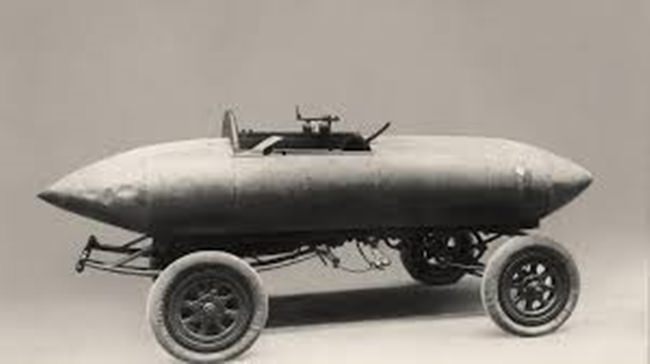
This significant vehicle was electric and the world speed record holder. La Jamais Contente (never happy) had two direct drive Postel-Vinay 25 kW motors, running at 200 V drawing 124 Amperes each. This fine beast was driven by a Belgian, Count Camille Jenatzy.
In 1899, to break 100 km/h was breathtaking, but there was much more to it. An old adage goes that motor racing was invented when we built the second car, and this could easily be applied to Count Jenatzy and Count Chasseloup-Laubat. Fierce rivalry ensued, with the objective being the first person on the planet to crack 100 km/h.
While we regularly beat their times on the way to the supermarket, in those days, pre-1900, it was not known what effects this would have on the human body. Nobody had gone so fast before!
Bystanders thought that it was likely that one could lose its sight and the body fluids could harden themselves and thus the organs could explode. Other ones were totally convinced that God would send out thunder and lightning to those who dare to challenge him in this way. Fortunately for us, and the two counts, that theory was wrong and nothing happened, even so the two characters involved of who will be the fastest man became afraid of their achievements and decided to not continue with their speed fight after the magic 100 km/h was reached.
On the way to 100 clicks, in 1895 the Frenchman Charles Jeantaud participated in the Paris-Bordeau-Paris race steering his electric car. In order to not lose time with battery recharge he was accompanied by a team that transported several fully charged batteries as he had to change them 14 times.
Back came Jenatzy. His racing car had two motors; one in every axle box of the front wheels of 25 kW each one, which directly connected with the wheels without any intermediate parts. In the first tests the Belgian went with such a speed that the person responsible for time measuring forgot to start the chronometer, and we will never know at what speed he went. On the second attempt everything had been officially controlled and checked: Jenatzy had reached the 105.85 km/h, a real record, a real fright and a real challenge. It took the world 36 months to break this record.
The next milestone to be passed by the EV group was ‘range’, a fear still in many consumer’s mind. In July 1899 Count Chasseloup-Laubat drove 140 km without recharging the batteries. A year later, Louis Krièger increased this figure to 170 kilometers with a car of his own brand. In 1900 the French BGS reached the 262 kilometers without any need of recharge. A year later, Louis Krièger increased the limit to 307 kilometers. These are figures some EV’s cannot equal today!
Count Jenatzy came to an inglorious end, being shot by his friend while hunting in the Ardennes forest.
La Jamais Contente also looked to have an inglorious end too, as it had been allowed to deteriorate in the Compiegne Museum. However, fortunately a Belgian, Count Xavier Van der Stappen, generated funding for the building of a replica.
This replica is currently in the Belgian “Autoworld” Museum. According to Van der Stappen who managed the re-creation, it has been reconstructed based on plans provided by an engineer from the unrestored original car.
 |
 |





